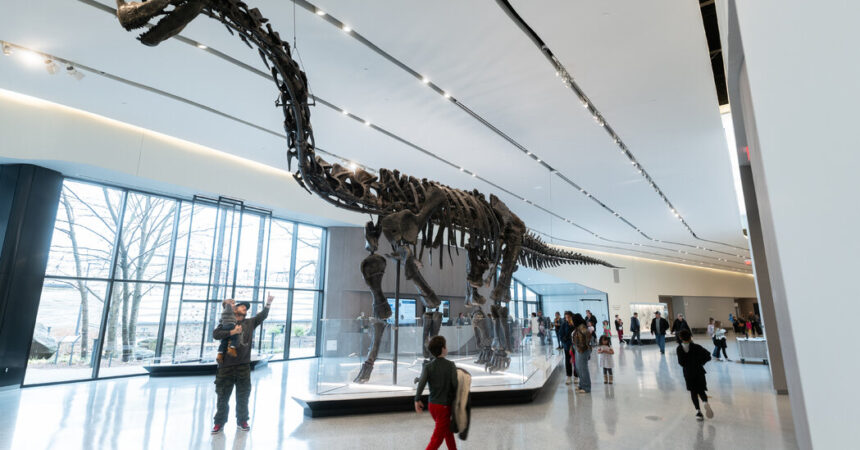At the Natural History Museums of Los Angeles County, one of the top priorities is helping visitors better understand the not-always-obvious natural world of their community. “We want to remind people that we’re not just a concrete jungle,” says Lori Bettison-Varga, the museum’s president and director. “There is nature in L.A., and we believe that if you have a better understanding of what’s in your backyard and your neighborhood you’ll have a much better appreciation of life on our planet.”
Thus, while their life-size dioramas of wildlife in California and the Pacific Northwest are still among the Los Angeles museum’s signature exhibits, a new area will soon be opened that reflects the latest thinking: NHM Commons, a 75,000-square-foot space that will feature a theater, a cafe and new seating and exhibition areas, serving as a sort of “front porch” to the museum.
There, said Bettison-Varga, “we hope to spark conversations around science.”
A likely conversation starter among visitors to the Cleveland Museum of Natural History, once its transformation is complete, will be an exhibit called “We’re All Stardust,” an interactive light sculpture that will anchor one of the two new halls and use infrared camera technology, a powerful game engine and projection mapping techniques to create a dramatic simulation of a supernova.
Also part of this exhibit is a feature that allows visitors to see on a large screen their own silhouettes fill up with floating particles of stardust (a reminder that we all have our origins in the elements of the stars).
But the museum knows that all the community-centered events and high-tech effects won’t be as effective without the crowd-pleasing presence of those giant extinct reptiles. In fact, only a few days after Trudy the Triceratops was relocated to her new perch, her fossilized friend, Tony the Tyrannosaurus rex (yes, he’s got a nickname too) made his grand entrance in the new exhibit hall.
Together, the two dinosaurs will help attract visitors to the new wing as they glare through the glass at the outside world — made closer in this new vision of a natural-history museum.

